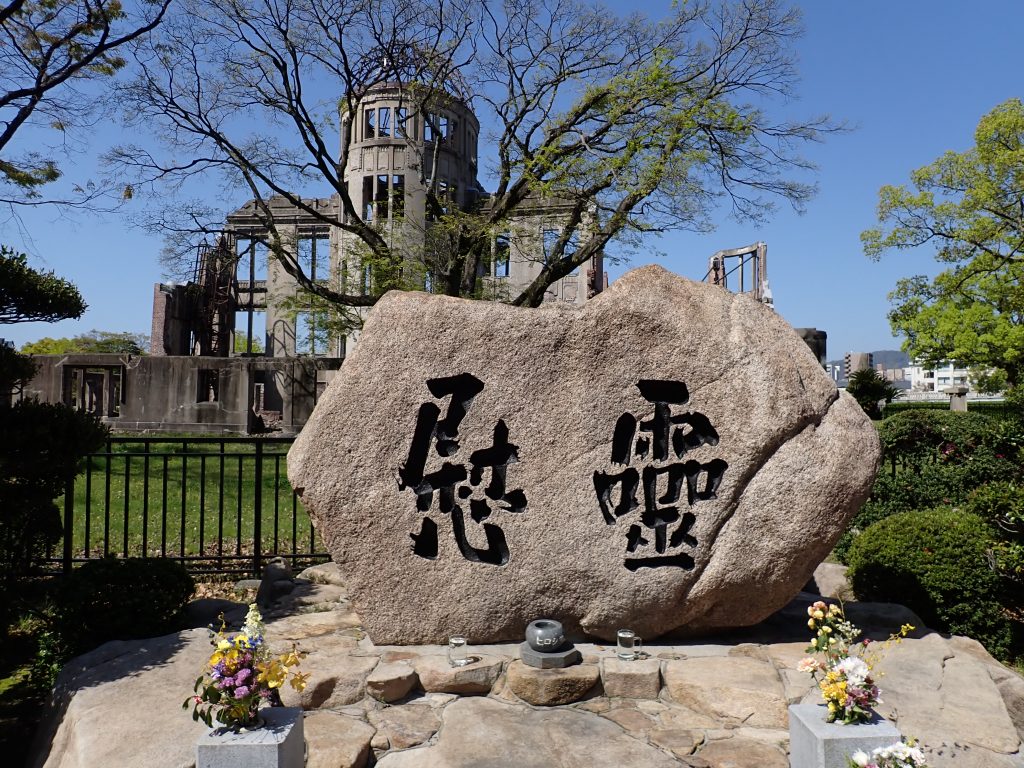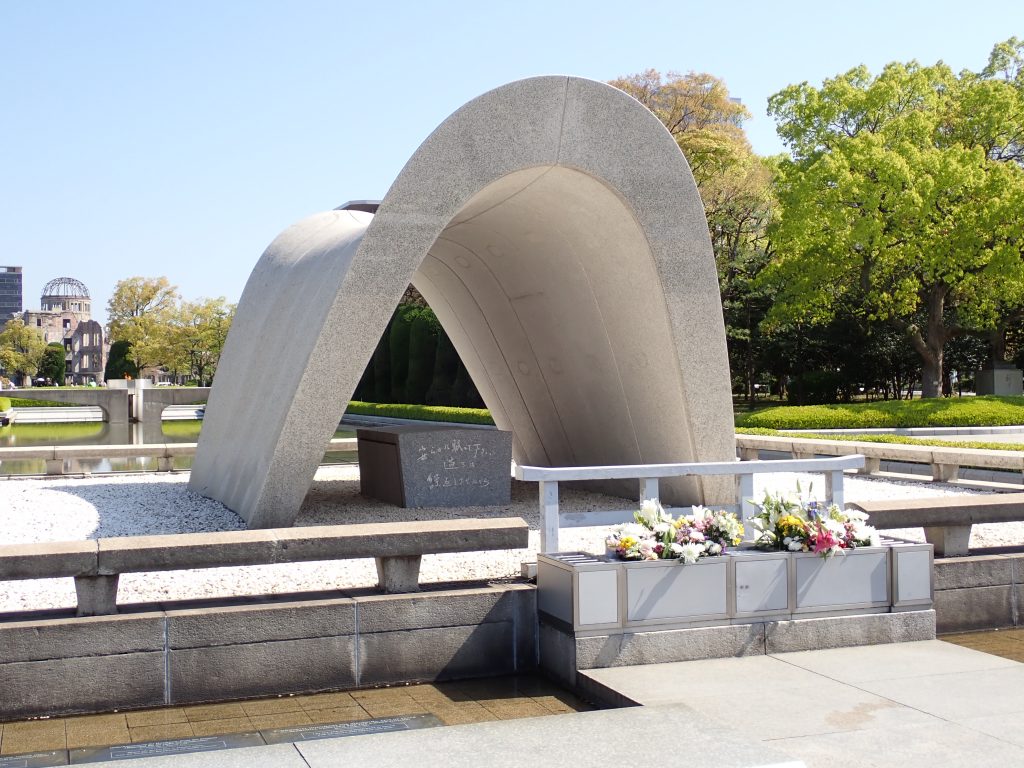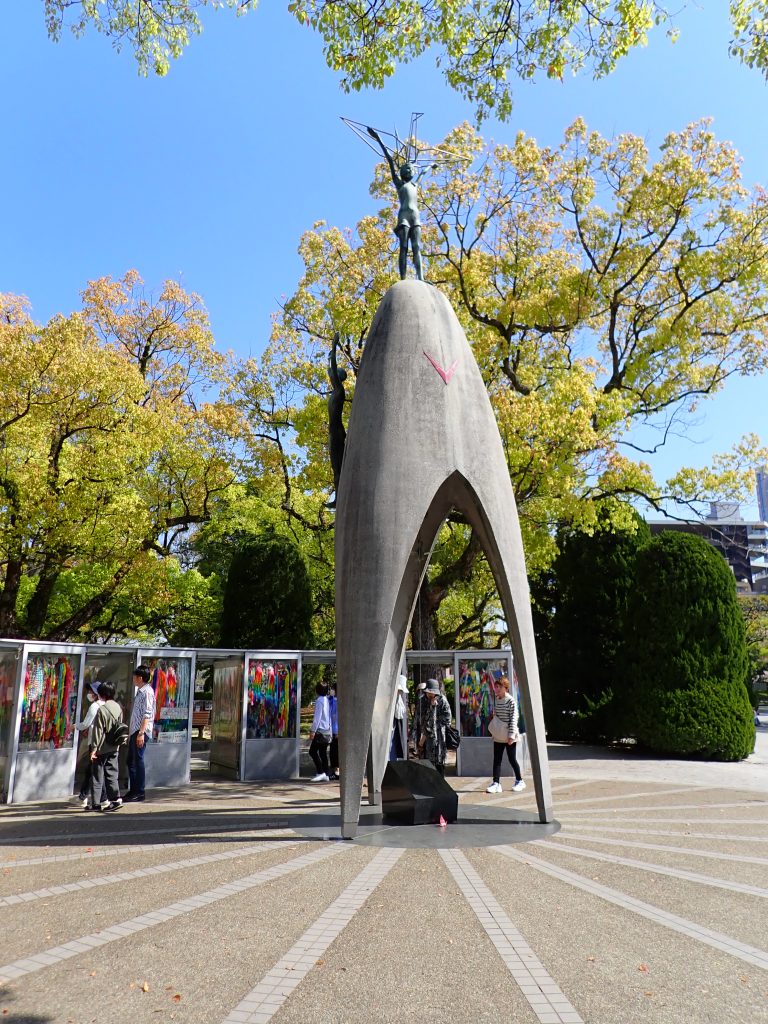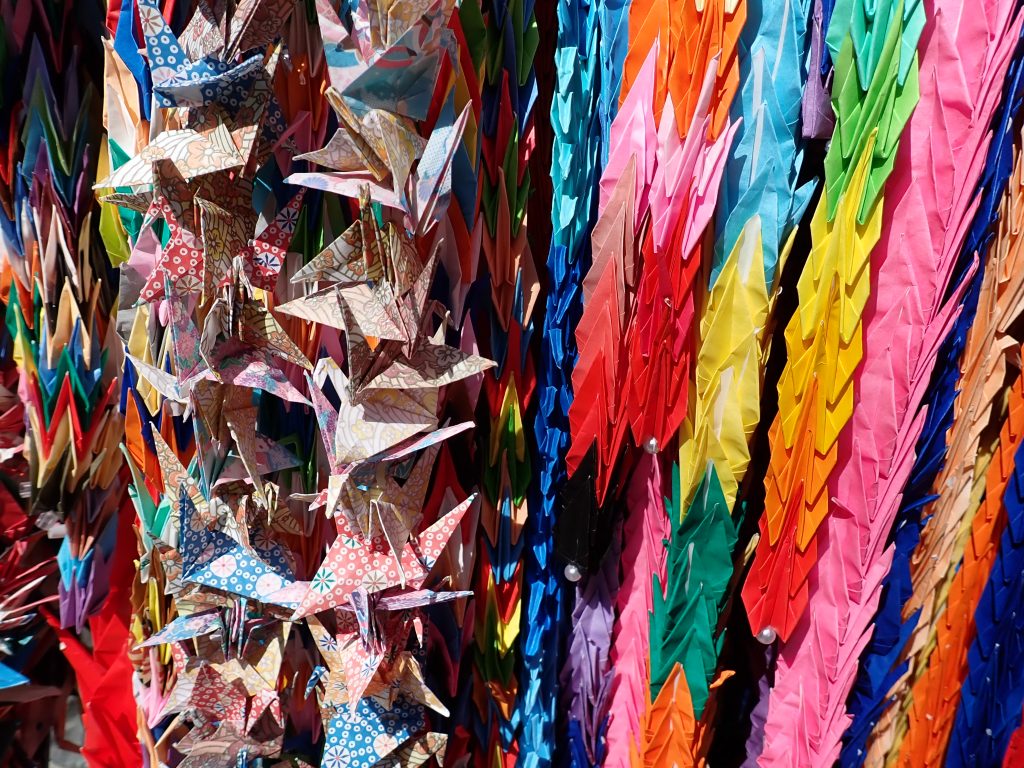Harrowing, haunting, thought-provoking and emotional – just a few of the adjectives that could be used to describe today. The main emotion though was untrammelled anger – anger at the people who made the decision to drop the first A-bomb over Hiroshima. The devastation and suffering it caused to civilians can not in any way be justified and seeing some of the personal stories just heightened this emotional response.
April 6th 1945 was when the first A-bomb was dropped. It killed about 146,000 people (mostly civilians) in the following four months – around half of them instantly. It flattened the town for several kilometres around the detonation site and the resulting fires finished off people and property which had not already been laid waste.

The dignity and forgiveness which marks the subsequent Japanese response and the memorials they have built should be a lesson to all countries and politicians of all hues. In Hiroshima the principal memorial is the Hiroshima Peace Park, roughly at the site of the detonation of the bomb. The park is open with long vistas across the area running through to the Genbaku (or A-Bomb) Dome – the remains of the Hiroshima Prefectural Industrial Promotion Hall. This was the only structure that remained standing after the blast and its ruins stand as a powerful symbolic reminder of the power of the blast. Further down the park is one of the first memorials in the park, built in 1952. This is a concrete, saddle-shaped monument that covers a cenotaph holding the names of all of the people killed by the bomb. It is lined up to frame the Peace Flame and the A-Bomb Dome.

There is also a Children’s Monument. This is dedicated to the memory of all the children who died in the blast. It is composed of a statue of a girl on an almost rocket-shaped plinth. She has outstretched arms and a folded paper crane rises above her. It is based on the story of Sadako Sasaki – a young girl who died from the radiation resulting from the blast. She aimed to fold 1,000 paper cranes in response to a Japanese legend which says that the crane lives for a thousand years. It is a mystical and holy creature like the dragon and the tortoise. This is why one thousand origami cranes are made – one for each year of its life. Sadly Sadako only managed to fold 644 cranes before she became too ill to manage and died, so her classmates folded the other 356 cranes for her. Around the statue of Sadako are cases full of folded paper cranes, folded by children all over the world and sent to Hiroshima.


At the end of the park is the Peace Museum and it is surely impossible to go through the exhibits there without reflecting on the stupidity and waste that resulted from this barbaric act. Burnt children’s school clothes, distorted lunch boxes of children who died and photo after photo which were difficult to absorb but which amply demonstrated the true horror and suffering which was caused.
The whole park and all the thoughtfully constructed monuments are perhaps the most powerful argument for all our leaders to look for peace. The costs of not doing this are too great to countenance.

